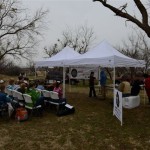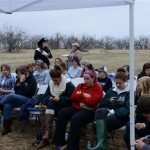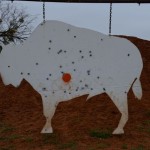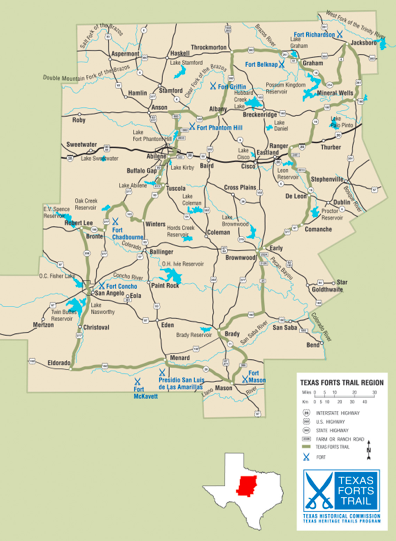Second Annual Miss Frontier Texas 2013 Pageant Competition.
Contestants in the second annual Miss Frontier Texas! Pageant this past April 2013, competed in events including pitching a tent, roping basics, washing clothes on a washboard, chuck wagon cooking, cutting wood, composing an essay on frontier women and saddling a horse. The event that took place at Fort Phantom was shooting a .50 caliber buffalo rifle at a target 400 yards away.
Texas Forts Trail
 Fort Phantom Hill is part of the Texas Forts Trail, a 650-mile highway tour of historic Texas forts in West Central Texas. The Texas Forts Trail website describes it this way:
Fort Phantom Hill is part of the Texas Forts Trail, a 650-mile highway tour of historic Texas forts in West Central Texas. The Texas Forts Trail website describes it this way:
“The frontier forts of Texas were lonely outposts in wild country. As settlers streamed west with dreams of new opportunity, the federal government established lines of forts to protect Texans on the advancing frontier. The passions of that era often resulted in conflict: frontiersmen on one side, tough and self-reliant, accustomed to taking what they wanted; Native Americans on the other side, resentful of intruders into their domain. In between stood the frontier soldier. His hardships were many and his dangers very real. Usually, the soldier built the fort—he felled trees and shaped crude timber, quarried stone and heaved both into place with muscle and sweat. As frayed tents gave way to barracks, the soldier looked around and found the nucleus of a town huddling in the safety of the new fort. “Civilization” had arrived—the frontier had moved. Along with it marched the soldier, trekking farther west into an uncertain environment.
From 1848 to 1900, the U.S. Army built 44 major posts and set up more than 100 temporary camps in Texas, the nation’s largest military department. In addition, a number of earlier Republic-era forts, private bastions erected by pioneer families, and a host of much older presidios (forts) from the Spanish colonial period had been built and abandoned.”
[jbutton color=”brown” size=”small” link=”http://texasfortstrail.com”]Texas Forts Trail Website[/jbutton]
[jbutton color=”brown” size=”small” link=”http://texasfortstrail.com/map”]Texas Forts Trail Interactive Map[/jbutton]
Links to:






